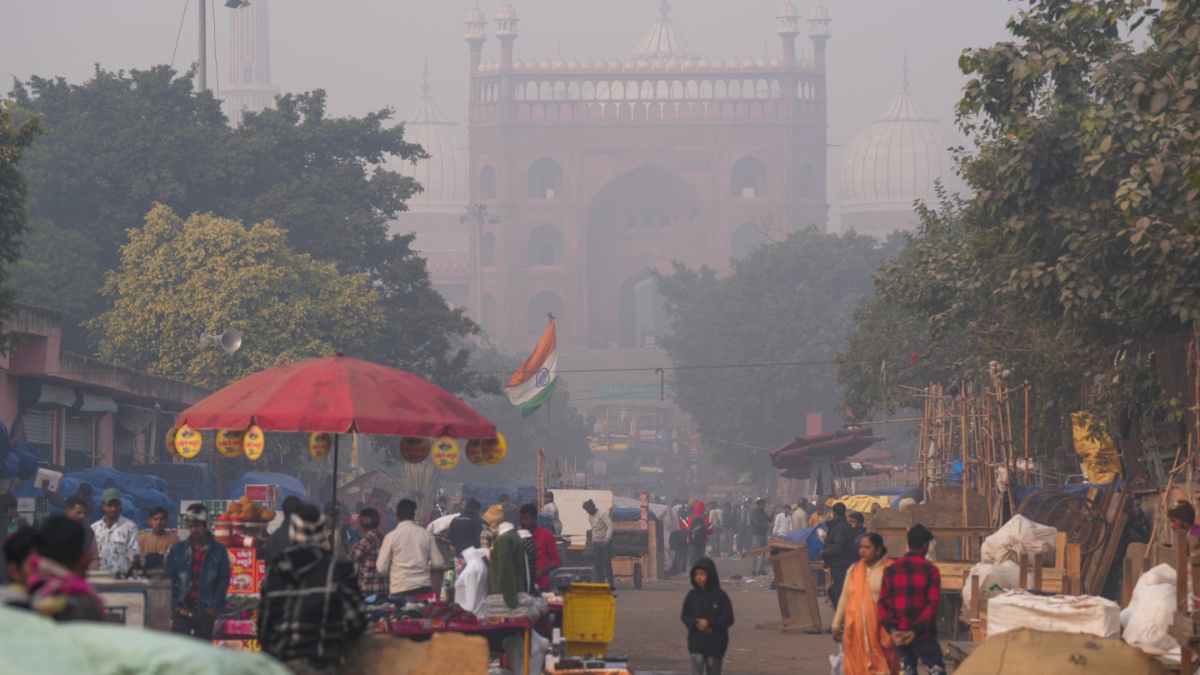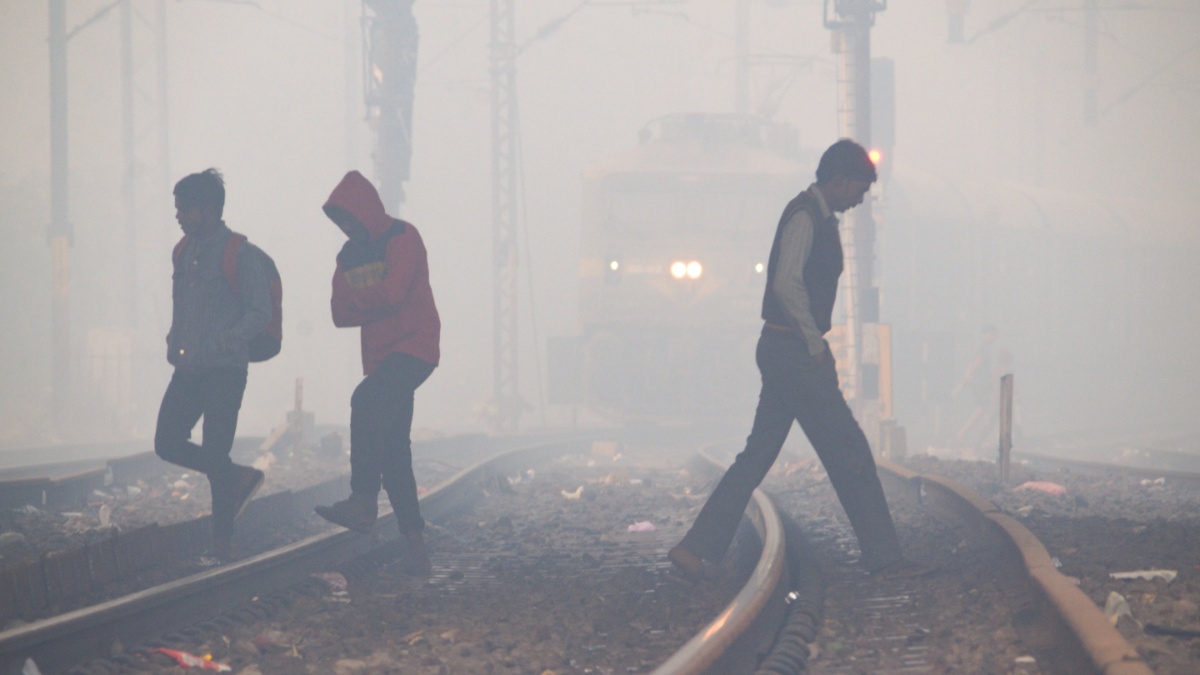
Car emissions largest contributor to Delhi's poor AQI: CSE study
New Indian ExpressWhen stubble burning was at peak between October 10-20, the contribution of average farm fire to Delhi’s PM2.5 level was only 0.7%, says the report. Further, when stubble burning induced pollutants increased sharply since October 22, the PM2.5 levels reached 213 µg/m³, which falls in the ‘very poor’ category. On October 31, the concentration was 206 µg/m³, only 3 per cent lower than the October 23 peak, even though the stubble burning contribution on October 31 doubled compared to October 23. “The data clearly indicates that local sources are the primary contributors to the elevated PM2.5 levels in Delhi, as concentrations remained high even when the impact of stubble burning was minimal,” says Anumita Roy Choudhary, Executive Director of CSE and one of the authors of the study. Delhi Government has taken a number of measures such as implementing the largest ever CNG programme for the public transport and local commercial transport, phasing out of 10-year-old diesel and 15-year-old petrol vehicles, restrictions on entry of non-destined trucks, introduction of Bharat Stage 6 emissions standards, and onset of the fleet electrification.
History of this topic

Recycling crop stubble is the simplest solution for Delhi’s annual smog problem
Hindustan Times
Air pollution hurts growth: Trying new ideas could make a difference
Live Mint
Delhi's air crisis: Worst November in 8 years sparks calls for action
India Today
Union Minister Nitin Gadkari’s Candid Take On Avoiding Being In Delhi: ‘Itna Bhayankar Pollution Hai…’
ABP News
Farm fires rise in M.P., drop in Punjab, Haryana: IARI data
The Hindu
Why is Delhi's air quality still 'very poor' despite reduced stubble burning?
India Today)
Delhi’s pollution emergency and India’s aspiration to become a leading economy
Firstpost
Smokescreen or reality? The truth about stubble burning in Punjab
India Today
Delhi pollution due to global warming, changing climate: Air quality panel
India Today
Stubble burning continues in Punjab amid poor air quality in Delhi
Hindustan TimesDelhi pollution crisis fuels demand for CNG, BS-6 vehicles during wedding Season
Deccan Chronicle
Delhi's AQI Sees Slight Improvement Amid Anti-Pollution Curbs, Air Remains Toxic
ABP News
Delhi air pollution: National capital’s air quality plunges to ’hazardous’ levels with AQI soaring to 526
Live Mint
Delhi air pollution: Why has India failed to clean up its toxic smog?
Al Jazeera
Another toxic day as sun can’t snap Delhi’s severe-plus streak
Hindustan Times
Union Minister ML Khattar says no use use in blaming others, amid Delhi's severe air crisis
Op India
Delhi air quality today 60 times more toxic than WHO limit. What health experts said
Hindustan Times
Delhi air pollution highlights: AQI at 471; Environment Minister says call on odd-even measures to be taken soon
The Hindu
Delhi pollution: Blame game picks pace in capital
New Indian Express
Living hell: Delhi’s air quality plummets to alarming levels
New Indian Express
As Delhi's air pollution worsens, here's what you can do about it
India Today
Delhi air crisis discussed at COP29: Experts term it a public health emergency
India Today
Maximum Toxi-city: Delhi's pollution crisis prompts WFH orders, school closure
Hindustan Times
Politics clouds clean air efforts as Delhi CM Atishi blames BJP for Haryana stubble burning
Hindustan Times
Thermal power plants: A pollution worry for Delhi
New Indian Express
Atishi blames Centre for Delhi pollution: BJP-ruled states lead in stubble burning
India Today
Delhi: Grap 4 and anti-pollution curbs in play as AQI hits season’s peak
Hindustan Times
Season-high stubble smoke plunges Delhi air into ‘severe’ again
Hindustan Times
Delhi chokes on toxic air, stubble burning contributes 38% to pollution
India Today
Stubble burning contributed to over 30% of Delhi's pollution levels: Data
India Today
Delhi smog explained: Why air turned hazardous and early respite looks bleak
India Today
Delhi's air crisis not just due to farm fires. It's our own garbage, cars
India Today
Delhi Air Quality - Delhi pollution in ‘severe’ category, first this season, AQI soars to 429 - Delhi News
India Today
Farm fire contribution to Delhi pollution dips this year
Hindustan Times
Delhi chokes as AQI remains above 300
Deccan Chronicle
Delhi's air quality continues to be 'very poor', hospitals see surge in respiratory cases
India TV News
Delhi air quality ‘very poor’ on November 10
The Hindu
Punjab records highest single-day spike with 730 stubble burning cases
Hindustan Times
Delhi air pollution: Rise in asthma patients, double penalty on stubble burning as AQI drops to ‘severe’, know details
Live Mint
Delhi's 10,000-bus goal still unmet, vehicles drive city's pollution: NGO data
India Today
Punjab, Haryana farm fires account for 20% of Delhi PM2.5 from Nov 4-6: DSS data
Hindustan Times
Delhi Air Quality: Centre doubles fines for stubble burning
The Hindu
Delhi Air Quality Deteriorates, with Farm Fires Contributing to Hazardous Levels
India Today
Delhi Air Quality Soars to 900 Amid Diwali Ban, Health Crisis Looms
India TV News
Why India’s Delhi Has One of World’s Worst Air Pollution Problems
Bloomberg)
Pakistan's Pollution Contribution to Delhi's Smog
Firstpost
Year-Round Strategy Needed to Tackle Delhi's Pollution Crisis
Hindustan Times
Delhi's Air Quality Under Siege: A Fire Season Crisis
India Today
Stubble Burning Declines in Haryana and Punjab, But Delhi's Air Quality Remains Poor
ABP NewsDiscover Related
















































